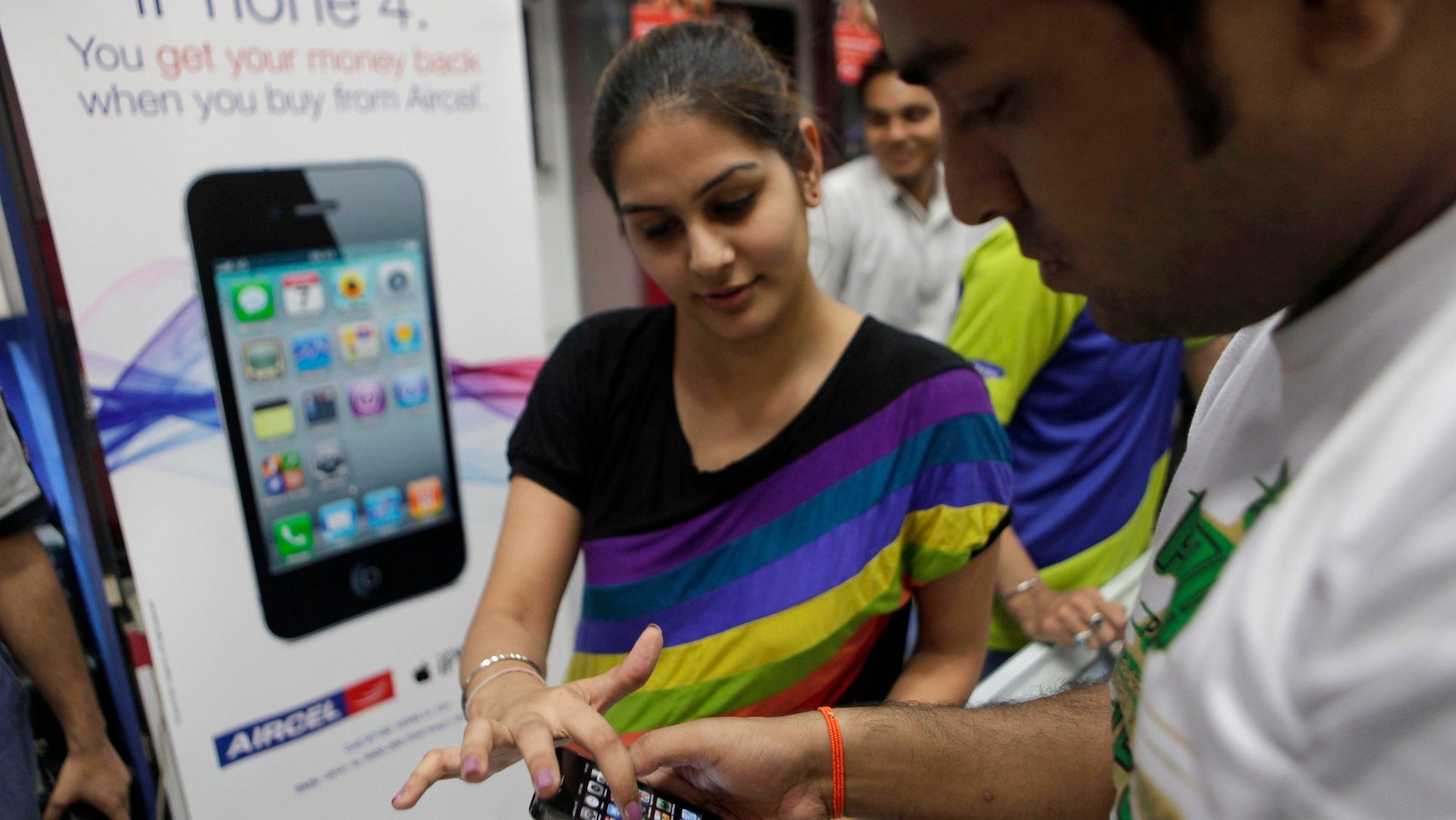Hey Apple, welcome to India. What took you so long?
There are no Apple Stores in India, and it’s going to stay that way for quite a while. Sure, there are “Apple Shops” inside other retailers, but India only allows fully-owned, single-brand foreign retailers to set up shop if 30% of the stock is locally sourced. Apple can’t even sell iPhones from its Indian website.


There are no Apple Stores in India, and it’s going to stay that way for quite a while. Sure, there are “Apple Shops” inside other retailers, but India only allows fully-owned, single-brand foreign retailers to set up shop if 30% of the stock is locally sourced. Apple can’t even sell iPhones from its Indian website.
Apple is, however doing the next best thing. According to a report in today’s Economic Times, the iPhone-maker will expand its network of franchisee stores in India threefold to 200 by 2015—and it will pay for them to look as slick as Apple Stores in other countries.
The newfound enthusiasm is the result of a belated realization that India is, after all, a pretty decent market for Apple’s products. Between July and September 2012, iPhones accounted for 3.9% of India’s smartphone sales by revenue. In the following quarter that figure rose to 15.6%. The surge can partly be explained by the release of the iPhone 5. But it also has a lot to do with new distribution partners. Suddenly, the iPhone was actually visible.
The present quarter should show good results too. Apple introduced financing options in January, allowing customers to cushion the shock of a Rs 45,000 ($830) phone by paying a third upfront and the rest in monthly installments. (Samsung quickly followed suit.) It also put full-page, front-page ads in national newspapers, which touted not just the iPhone 5 but relatively cheap offers for older models as well.
But this staggering growth only shows the low base form which Apple is starting. Despite its spot as a leader in terms of revenue, the iPhone figures nowhere in the top five smartphones sold in terms of volume. And much of the expected growth in the Indian smartphone market is driven by low-cost handsets, many from Indian companies, which no amount of easy financing can compete with.
Besides, Apple’s historically sniffy attitude towards India—until recently Apple products had to be actively sought out from resellers with no high street presence—has given Samsung a chance to solidify its base. With customer loyalty, an extensive retail and service network, lots of cheaper models, and solid competition to the iPhone at the higher end, Samsung leads in terms of both volume and value.
That means Apple will probably see impressive percentage growth in the quarters to come. But once it exhausts its high-end base in the bigger cities, it may struggle against Samsung and domestic firms for dominance over the market.